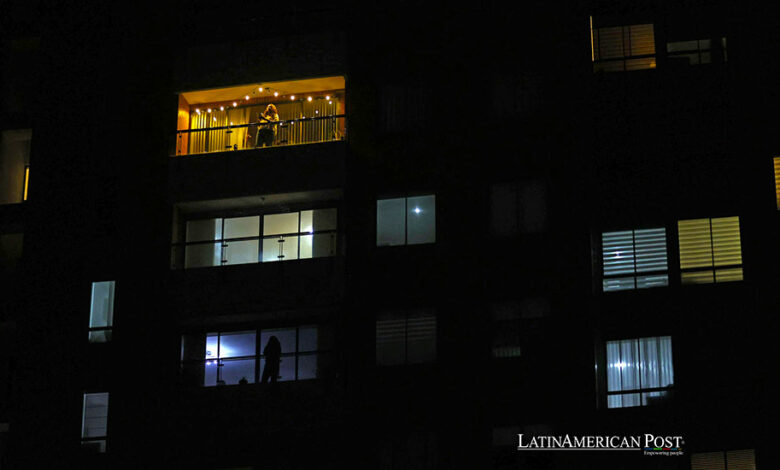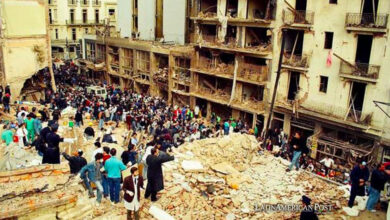Colombian Voices: Public Dissent Against Government Reforms

In Bogotá and Medellín, citizens expressed dissatisfaction with President Gustavo Petro’s political direction and proposed reforms through pots, horns, and dimmed lights.
In the heart of Colombia’s major cities, Bogotá and Medellín, a symphony of protests rang out as residents, with unwavering determination, expressed their growing unease with the government’s current trajectory. On a recent Wednesday evening, neighborhoods were alive with the sound of clanging pots, honking horns, and vuvuzelas. This was not just noise but a powerful signal of deep-rooted discontent aimed at President Gustavo Petro and his administration’s proposed political and social reforms.
Balcony Protests and Car Convoy Demonstrations
This demonstration, orchestrated through the power of social media, saw Colombians creatively using their balconies and cars as platforms for protest. Flags were unfurled, and lights turned off as symbols of resistance. The chant, “Fuera Petro, fuera Petro” (Petro out, Petro out), echoed through the night, underscoring the public’s frustration just hours after President Petro’s fiery May Day speech. During the address, he announced a severance of diplomatic relations with Israel, alleged conspiracies to oust him from power, and advocated for a popular constituent assembly to redefine the nation’s constitution.
President Petro’s speech was notably polarizing, as former Minister Juan Camilo Restrepo described it on X (formerly Twitter): “It was a mix of eloquence, slander, ambiguity, and heightened polarization.” Such statements reflect the complexity and divisiveness of the political climate in Colombia, where calls for social justice and democracy clash with fears of continued violence and inequality.
The discontent with Petro’s administration can be traced to various sources. His plea to trade unions for permission to speak on May Day at Plaza de Bolívar, a central venue in Bogotá’s political landscape, was a strategic move. Here, Petro criticized those who had participated in large-scale demonstrations against his government on April 21, framing them as opponents of change in Colombia. “Here, some came asking that there be no changes in Colombia, that we continue in this quagmire of blood, violence, and social inequality,” Petro stated, contrasting his opponents with his agenda aimed at establishing “the flags of social justice, democracy, and definitive peace in Colombia.”
Mixed Reception and Concerns for Stability
However, the president’s words and proposed reforms have not been universally welcomed. Many Colombians, deeply concerned about the potential for further instability, are wary of the significant changes he intends to implement, particularly in a country still navigating the complex legacies of conflict and inequality. The protests in Bogotá and Medellín serve as a stark reminder of the volatile nature of public sentiment in Latin America, where political dissatisfaction often leads to vibrant and vocal civil actions.
The Latin American context is critical in understanding these protests. The region has a rich history of public demonstrations as tools for political and social change. From Chile’s widespread protests against inequality to Venezuela’s demonstrations against governmental authority, Latin America has seen its share of public outcry serve as a powerful catalyst for change or, at times, further entrenchment.
In Colombia, the stakes are exceptionally high. The country is at a crossroads, dealing with the aftermath of decades-long internal conflict and striving towards peace and reconciliation. Petro’s initiatives, intended to address deep-seated issues of social justice and equity, are seen by some as necessary yet by others as overly ambitious and fraught with risks.
Balancing Change and Stability: The Ongoing Debate
The current protests highlight the ongoing debate in Colombia and similar nations across Latin America: how to balance change with stability and ensure that reforms do not exacerbate the very issues they aim to solve. As Colombians continue to voice their concerns, the international community watches closely, recognizing that the outcomes in Colombia could have far-reaching implications for governance and social justice in the region.
Also read: 57 Deaths Too Many: Colombia’s Peace Plans Threatened by Government Inaction
As the nation moves forward, the voices of its people, which are diverse and often conflicting, will undoubtedly play a critical role in shaping its path. Whether these voices can harmonize and find a consensus on the road to reform, or if they will continue to clash, remains to be seen. For now, the streets of Bogotá and Medellín will likely continue to resonate with the sounds of dissent; each protests a reminder of the vibrant democratic spirit that defines much of Latin America.





